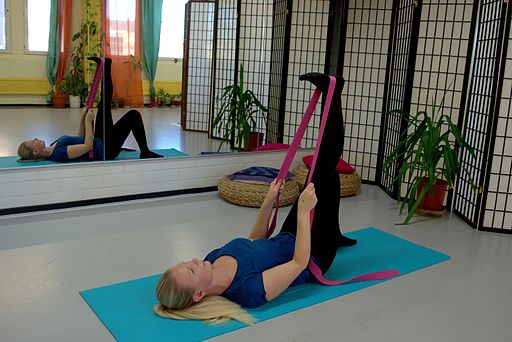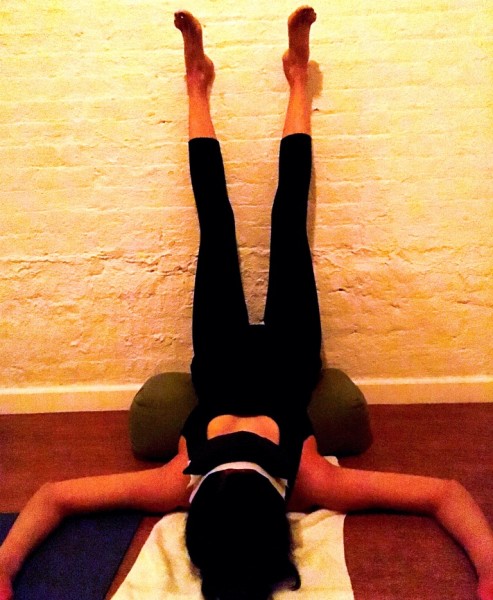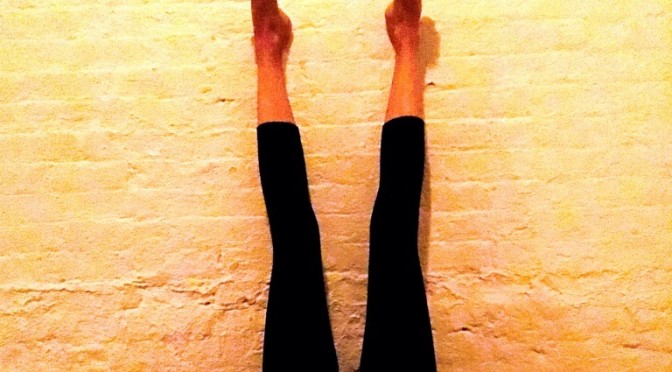Can We Do More with Restorative Yoga?
This post first appeared on the Yoga 216 blog. It is reposted here with permission.
In the previous post, we talked about why restorative yoga is a necessity for us urban folks!
While restorative yoga is about paring down to basics and getting us to slow down, take note… you can still get a lot out of restorative yoga! As we continue to explore this topic, we will focus on some ways to make the best of restorative yoga, through creative sequencing, mixing activity and stillness in your practice, and by working in sync with deep breathing.
Sign up now if you want to receive more love from Spice Yoga to you. Our Mindful Monday newsletter (sent approximately on the 1st Monday of each month, no spam!) features highlights of the month’s video tutorials and original writings to take you deeper into your personal practice. As a welcome gift for a LIMITED time only, receive a beginners’ mindfulness audio podcast too.
[mc4wp_form]
[After signing up, add ask@spiceyoga.com to your email address book to ensure that you receive the gift.]
Super-Charge Your Organs
Restorative yoga poses can be sequenced to support abdominal organ health – combining squeeze-and-release patterns, like a gentle self-massage on our spleen, stomach and liver. Try to alternate forward folds and gentle chest openers, to compress the abdominal organs and then super-charge them with fluids and nutrients from your system. You’re not doing anything extra, just being smarter with how you practise!
How to Trick the Body into Relaxation
Because of our daily postural habits, our hamstrings, hips and chests may be relatively tight in general. When we try to get into some shapes like hamstring stretch, hip opening or back bending, some of our muscles may be forced into a long length too quickly or forcibly, and may react by tensing up. In this case, trying to get to and “just stay” in a restorative pose would be pointless and even counter-productive. Instead, we need to slowly coax the body into calmness. One way to work with each pose is to warm up with gentle dynamic movements, and engage in some passive stretching before finally resting in supported stillness.
This is an example for someone with tight hamstrings working while lying on the back:
- Start with slow dynamic movements – within your own easeful range of motion – lengthening and contracting the muscles repeatedly instead of holding them at maximum limit, to warm up. E.g.: gently straightening and flexing at the knee joint.
- Continue with passive stretching – applies some kind of gentle tension to provide tactile feedback to the nervous system to release gripping and allow for lengthening. E.g. use a yoga strap over the sole of your foot to support a raised leg hamstring stretch.

Use a strap to support the hamstring stretch - Hold the restorative pose – restorative principles suggest that we should modify with props to make it as undemanding as possible. E.g. in corpse pose (savasana), pad generously under the thighs, knee joints and lower back when lying supine, to prevent further tension build-up in the hamstrings and to coax them into releasing further.
You Can be Meditating!
As many of us who have tried to meditate can attest to, it is difficult to just sit and try to be still. The mind continues with its level of activity and the more we try to keep the mind calm, the more we struggle. And a body that is not prepared to stay still will give unpleasant feedback and the mind will continue to be bothered by the feedback.
In addition to coaxing the body into relaxation with the suggested technique above, we can also be coaxing the mind into relaxation, as the two are inter-related. As the body releases gripping and any remaining physical tension, the mental tension also gradually melts away, once your mind accepts that you are safe. The relaxed, unfettered mind is a good place to start to train the mind on concentration, as a pathway to meditation.

Your primary object of concentration while you are practising restorative yoga is your breath (surprised? :). Work with natural deep breathing to establish a slow, steady rhythm and a good constant point for your awareness to rest on during the practice. Through deep breathing, the nervous system is also soothed. With constant practice, you may occasionally get to taste the natural, effortless bliss that comes from a meditative experience.
The gentle transitions, undemanding poses and the guided body- and breath-awareness of restorative yoga can be a form of beginners’ meditative experience that is accessible to many who find it challenging to practise other forms of pure meditation. My clients share with me their anecdotes on how a regular practice of restorative yoga has helped them to overcome emotional impasses and to manage chronic pain, similar to many of the benefits shared by regular meditators.
So, restorative yoga = doing nothing is a busted myth!
We are in fact working at a deep level of rejuvenation and complete state of relaxation without exertion.
This should give you even more reasons to include restorative as part of your practice!
